24 hours ago, the most controversial thing about Pixar's new masterpiece Coco was Disney's tone-deaf attempt to trademark the phrase "Dia de los Muertos," a move so universally trashed it forced the company to hire a small group of cultural consultants to ensure their treatment Mexican culture could be as sensitive and respectful as possible.
Now, the most controversial thing is its association with yet another Hollywood sex offender. This time, it's John Lasseter, lover of whimsical shirts, creator of numerous children's classics from Toy Story to Coco, and accused groper of women. He is now taking a 6-month absence from Disney and Pixar to learn "how to be a better leader" and " start taking better care of myself, to recharge and be inspired." Some of the allegations made against him have already been disputed by those he was said to have harassed, yet this fits a pattern of overall abuse in the animation industry.
Here's how the story went down:
The Hollywood Reporter gives him the heads up.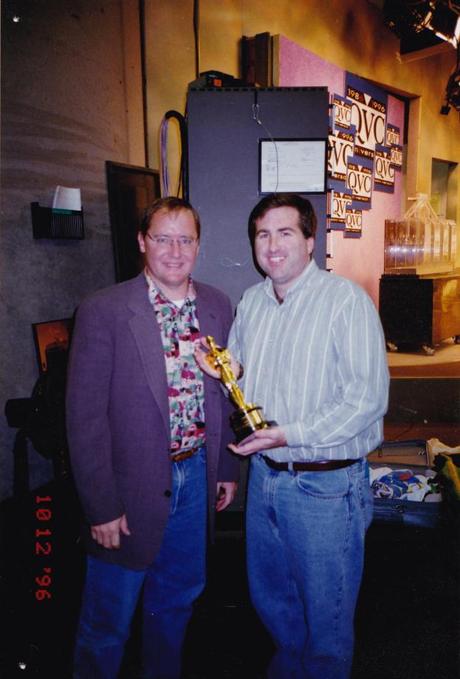
Legendary entertainment journalist Kim Masters should have been the one to break the Harvey Weinstein story. She had been at him and at him for decades, and was so aware of the rumors about his predatory behavior that upon first meeting him she apparently said, "So, I hear you like to rape women." However, Masters didn't break the story; The New York Times and Ronan Farrow did. They convinced people to go on the record; Masters never could.
Masters and THR aren't going to let that happen again. Armed with quotes from multiple Pixar and animation community sources who spoke on the condition of anonymity out of fear for losing their job, the publication prepared a story alleging John Lasseter's pattern of sexual harassment, harassment so well-known in animation circles female employees dubbed an evasive move to avoid being touched by a man on their thigh the "Lasseter." The allegations don't rise to Harvey Weinstein levels of predatory assault and rape, but the behavior described is still clearly objectionable.
As per protocol, THR reached out to Disney and Lasseter for comment before publishing, which gave Lasseter the chance to jump out in front of the story. So, he released this carefully worded statement to everyone at Pixar before THR 's allegations had been made public:
I have always wanted our animation studios to be places where creators can explore their vision with the support and collaboration of other gifted animators and storytellers. This kind of creative culture takes constant vigilance to maintain. It's built on trust and respect, and it becomes fragile if any members of the team don't feel valued. As a leader, it's my responsibility to ensure that doesn't happen; and I now believe I have been falling short in this regard.I've recently had a number of difficult conversations that have been very painful for me. It's never easy to face your missteps, but it's the only way to learn from them. As a result, I've been giving a lot of thought to the leader I am today compared to the mentor, advocate, and champion I want to be. It's been brought to my attention that I have made some of you feel disrespected or uncomfortable. That was never my intent. Collectively, you mean the world to me, and I deeply apologize if I have let you down. I especially want to apologize to anyone who has ever been on the receiving end of an unwanted hug or any other gesture they felt crossed the line in any way, shape, or form. No matter how benign my intent, everyone has the right to set their own boundaries and have them respected.In my conversations with Disney, we are united in our commitment to always treat any concerns you have with the seriousness they deserve and to address them in an appropriate manner. We also share a desire to reinforce the vibrant, respectful culture that has been the foundation of our studios' success since the beginning. And we agree the first step in that direction is for me to take some time away to reflect on how to move forward from here. As hard as it is for me to step away from a job I am so passionate about and a team I hold in the highest regard, not just as artists but as people, I know it's the best thing for all of us right now.I'm confused. What is it he's said to have done?
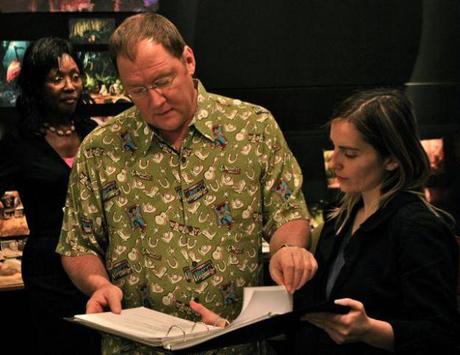
THR published Lasseter's statement and then published their original story, which cites longtime Pixar employees revealing Lasseter's history of "grabbing, kissing, making comments about physical attributes," both in the workplace and at public events (like premiere parties) where he's a well-known drunk. Female employees simply learned over time to turn their head to avoid being kissed by Lasseter or to not wear a skirt on days where there might be a boardroom meeting where Lasseter's hands could "travel" unbeknownst to anyone else in the room.
His hugs also officially crossed the line, "You'd hug him and he'd whisper in your ear, a long time. He hugged and hugged and everyone's looking at you. Just invading the space."
Of course, Lasseter's statement directly addresses the "unwanted hugs," which one employee told THR was clearly his attempt to trivialize the allegations, "To sum this up as unwanted hugs is belittling and demeaning. If it was just unwanted hugs, he wouldn't be stepping down."
Disney, for their part, has simply said this: "We are committed to maintaining an environment in which all employees are respected and empowered to do their best work. We appreciate John's candor and sincere apology and fully support his sabbatical."
What's this about the allegations being refuted?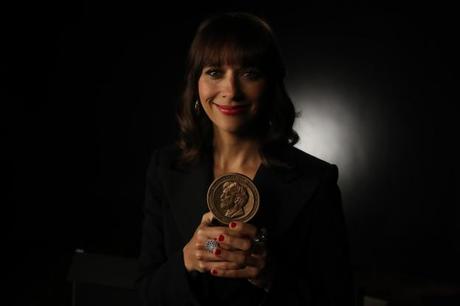
THR's original report alleged, citing multiple Pixar sources, Rashida Jones and Will McCormack left their gig writing the Toy Story 4 script after Lasseter "made an unwanted advance." That made Jones the only woman to be named publicly as a possible Lasseter victim.
It took Jones and McCormack less than 12 hours to deny the story, releasing a joint statement to The New York Times:
"The breakneck speed at which journalists have been naming the next perpetrator renders some reporting irresponsible and, in fact, counterproductive for the people who do want to tell their stories. In this instance, The Hollywood Reporter does not speak for us [note: T HR's own Stephen Galloway previously worried something like this would happen]. We did not leave Pixar because of unwanted advances. That is untrue. That said, we are happy to see people speaking out about behavior that made them uncomfortable. As for us, we parted ways because of creative and, more importantly, philosophical differences."
What does "philosophical differences" mean? Here's their explanation:
"There is so much talent at Pixar, and we remain enormous fans of their films. However, it is also a culture where women and people of color do not have an equal creative voice. We encourage Pixar to be leaders in bolstering, hiring and promoting more diverse and female storytellers and leaders. We hope we can encourage all those who have felt like their voices could not be heard in the past to feel empowered."
THR's report has since been updated with the clarification that Jones and McCormack were asked for comment, first on Nov. 7 and multiple times after that. Both parties repeatedly declined, and THR went ahead with its piece.
This error on THR's part could be seen as discrediting to their entire report, but we must not forget last month 217 women - and gender-nonconforming people - in the animation industry addressed an open letter to over a dozen studios "demanding an end to sexism and sexual harassment in their field." So, this is clearly an industry with a sexual harassment issue. Moreover, THR is no longer the only one making these allegations against Lasseter.
The inevitable follow-up report.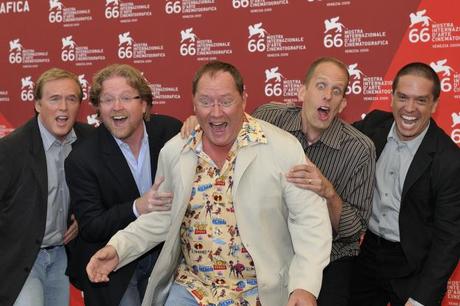
Variety now has their own take on the story, backing up THR' s reporting and adding quotes from their own anonymous sources who say they were too scared to ever speak out because Lasseter was so powerful and because Pixar's total work environment had in the past been very "sexist and misogynistic." Lasseter's behavior was so well-known an informal whisper network developed to advise young women to keep their distance from the co-founder. This goes back decades.
"Just be warned, he likes to hug the pretty girls," a female employee was told upon being hired in the late 90s. "He might try to kiss you on the mouth."
"John has a hard time controlling himself around young pretty girls," is what another female employee was told by her supervisor as an explanation for why she was not to attend the company's weekly reviews. But being excluded from such crucial meetings inevitably has a negative impact on your career, leading the employee to conclude her managers preferred to thwart her under the guise of doing it for her own safety rather than "have difficult conversations with the most important, high-ranking and powerful man in the company.
As for the unwanted hugs, "There is a currency there - the currency is touch, and being touched by this person who is always in charge," said another former Pixar employee. "It's personal and intimate and probably not appropriate."
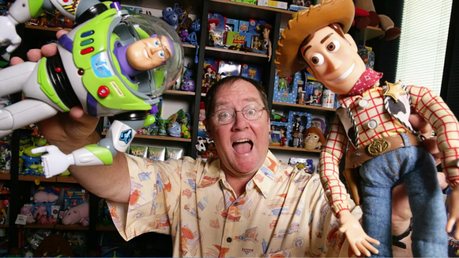
Anyone who's ever watched one of the behind-the-scenes docs on a Pixar or Disney Animation Blu-Ray knows Lasseter comes off as a big kid, housed in an office with wall-to-wall toys, wearing shirts that could easily pass for pajama tops and speaking with boundless enthusiasm. However, the meteoric rise of the company he co-founded and ongoing box office and critical domination of his various efforts, first with Pixar and then with Disney Animation Studios, is said to have emboldened him to live and work as if there were no boundaries.
When Pixar moved to newer, bigger corporate headquarters, for example, Lasseter suddenly started walking up to women in the office and kissing them on the lips.
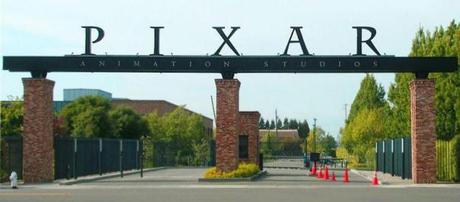
"I found it shocking," a former female employee said. "That's not a normal way of greeting a colleague."
Eventually Lasseter was counseled to cut it out, but his pledges to improve his behavior actually improved very little, turning Pixar into a place where you either had to buy in to the "And it was all, 'Oh ha ha, that's just our John," rationalization or simply learn to avoid him as much as possible.
The benefit of Lasseter's 2006 promotion to co-head of both Pixar and Disney Animation Studios was it kept him so busy, overseeing Brave and Inside Out in one job, Frozen and Zootopia in the other, he had to delegate more and thus had less day-to-day contact with the type of employees he used to harass. Moreover, as both companies continued to grow and add more female employees, both in positions of leadership and lower-level jobs, the boy's club environment inevitably abated, leading several to tell Variety they never personally observed any harassment and actually loved their job and workplace.
But, like one of the sources said, if this was all just "unwanted hugs" Lasseter wouldn't be taking a 6-month sabbatical. One of the ex-Pixar employees who was around in the days when Lasseter would regularly kiss women on the mouth without asking now laments, "I don't see taking a six-month vacation, which I'm sure he'll be paid for, is really gonna be a solution. I would hope he would individually apologize to people and get some help."

